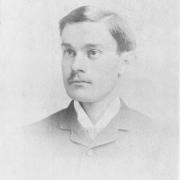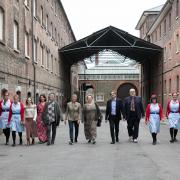Kent Life meets some of the people working hard to save our historic vessels from the scrap heap

All across Kent there are small groups of volunteers working hard to save some of our county's important historic vessels.
Dating back to the age of sail through to steam, and right up to some of our older diesel-powered craft, there are dozens of projects under way to conserve these national treasures.
One such group is the Medway Queen Preservation Society, based in Gillingham. Set up in 1985 to restore one of the Medway's most famous vessels, the group has been working tirelessly ever since.
The Medway Queen herself is a paddle steamer built in 1923. Originally a passenger ferry on the busy Strood-Chatham-Southend-Herne Bay route, she has quite a story to tell.
During the Second World War she was requisitioned for mine-sweeping duties and went on to become one of the Little Ships responsible for the evacuation of Dunkirk in 1940. Believed to have rescued a total of 7,000 men, she came home a national hero.
In the 1960s the ship became a restaurant and nightclub on the Isle of Wight, and achieved fame there in her own right. Eventually falling into ruin, she spent some years semi-submersed with damage to her hull. Bought and returned to the Medway in the 1980s, the preservation society was formed not long after.

"Medway Queen is one of a very small number of paddle steamers left in the UK," says Richard Halton, of the society. "She represents a bygone period in our history and our aim is that she will steam again.
"We are working to fit out the ship as a venue for static hire, in order to generate a revenue stream, and the long-term aim is to return the ship to full working order."
The most pressing job was the huge task of completely replacing her damaged hull, which was completed in 2013 thanks to grants from the Heritage Lottery Fund and other charitable foundations.
Although the hull was a job for the professionals, much of the restoration work is being done by a small group of volunteers. Getting her to run again will require significant further funding for a boiler and to commission the original engine. However, back in May, the project was given a £50,000 boost, thanks to an anonymous private donor who had visited the vessel and been impressed by the group's work.
"The members come from all backgrounds and walks of life," says Richard. "The source of their interest varies: local or social history, transport history or naval history. Some of us just like old ships and steam engines.

"Many have personal recollections of the ship in service or even as a nightclub on the Isle of Wight. Others know of family members who came back from Dunkirk on board her. Many of our volunteers are retired tradesmen but we have others who concentrate on the equally vital aspects of marketing and PR and, of course, those who run the guided tours on Saturdays.
"In the meantime, we hope to raise the funds to enable Medway Queen to attend the Dunkirk 80th Anniversary commemorations in Ramsgate next year.
"We will need around £20,000 to meet the anticipated towage and insurance costs."
Although closed to the public most weekdays during the current phase of restoration work, the ship is open to the public each Saturday until 7 December.
The visitor centre on the pier at Gillingham is free to visit and there is a £5 charge for an annual adult ticket for guided tours of the vessel herself.

A short drive away is another vessel considered one of the River Medway's 'fine old girls'. The motor tug Kent, along with her little sister, the 1966 'tosher tug' Fearnought, are moored in Chatham Maritime Marina and are under the care of the South Eastern Tug Society.
Built in 1948 for JP Knight Towage of Rochester, the Kent was one of the River Medway's strongest workhorses for decades. When the BP oil refinery opened on the Isle of Grain in 1953 it was the Kent that assisted the first tanker onto the berth.
"She's 71 years of age, which for a historic vessel is young," says Barry Hill, of the society. "But her involvement in the Medway, Thames and coastal areas was quite unique because she was one of the first diesel-powered tugs to go commercially operational.
"She is one of only a few fully functioning vessels of the era now and attracts so much attention and admiration wherever she travels."
At the time the Kent was the most powerful bollard-pull tug in existence and was in enormous demand from the moment she arrived on the River Medway, working constantly for years.

When it became economically unviable to keep her running, she was moored in the river to act as an advertisement for the towage company. Later, in poor condition and under threat of being scrapped, the society was formed to save her.
With around 20 members, only 10 of whom are actively involved in her maintenance and operation, it's an impressive feat that they've got her fully functioning again and polished up to look her best.
"Each member makes a monthly contribution to the society's funds and supply their labour free of charge," says Barry.
"This means that you muck in to complete the tasks required, from rebuilding mechanical components, replacing wooden decks, repainting, brass polishing, and providing tea and coffee to all workers and visitors.
"The society is a totally self-funding registered charity, relying heavily on the generosity of our visitors and patrons. With fuel and lubrication costs being so high, we walk a tightrope each and every year. But we survive."
With the pressures of funding and maintenance, it's a big responsibility for the volunteers - who have an average age of 77.
They are constantly thinking up fundraising activities and, like the Medway Queen, are always on the lookout for new members.
"It's the biggest old boys' toy there is," laughs Barry. "Some of our volunteers are former engineers or have worked on tugs but it doesn't matter what your skills are, we just need enthusiastic members.
"We're an interesting bunch of varied people, coming from all walks of life - I'm a retired policeman myself.
"The appeal of the old girl is such that it draws people in. I just thoroughly enjoy my involvement in it and so do the other guys."
The Kent is open to visitors every Saturday and Tuesday, and is moored close to the Ship & Trades pub in Chatham Maritime Marina. It also travels to various locations for boat festivals and events throughout the year, offering members of the public the chance to join them for the ride in return for a donation.
At the opposite end of the scale, Ramsgate is now home to a historic vessel just beginning its restoration journey. The wooden-hulled Francis Forbes Barton lifeboat was built in 1896 and served at both Broadstairs and Deal until she was taken out of service in 1926.
Having been found in 2017, rotting on farmland in Lincolnshire, it was the lifeboat's turn to be rescued. She was loaded onto the back of a lorry and carefully transported to Ramsgate Harbour, where the Francis Forbes Barton Preservation and Restoration Trust is currently raising funds for a project that will bring her back to original condition.
It's thanks to the hard work and determination of groups like these that historic vessels, each with their own stories, and each having touched the lives of so many over the years, are being preserved for future generations.
Stirring up memories of bygone days, they remain an important part of our local and national heritage.
For more information visit: www.medwayqueen.co.uk, www.mtkent.org.uk and search Facebook for 'Friends of Francis Forbes Barton.'



























